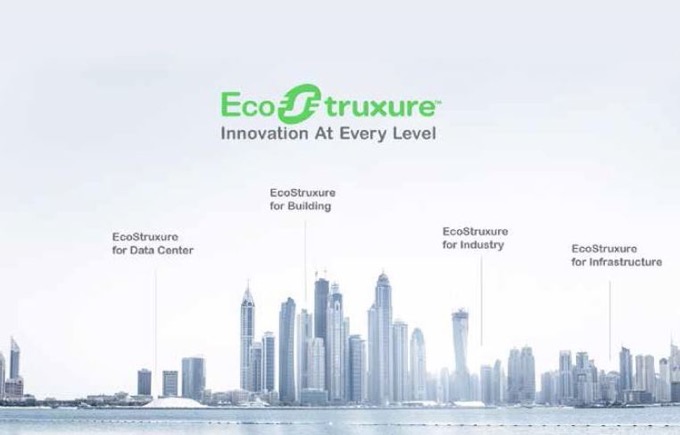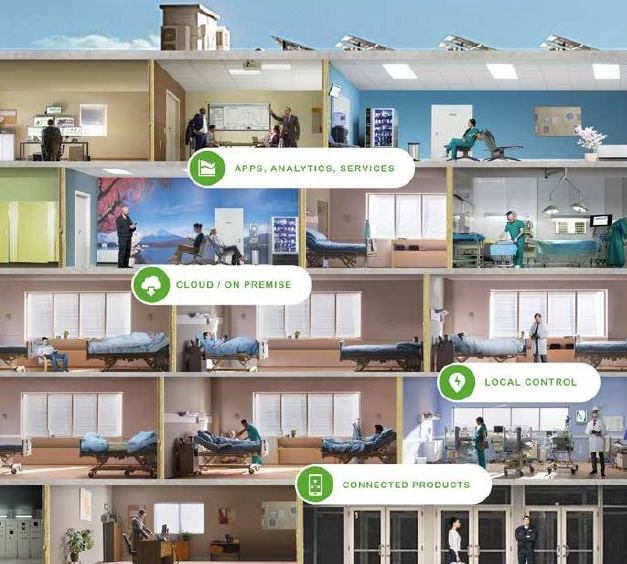
The speed of adaption to new technologies and their application in business processes gives companies a competitive edge and innovation that is today the key to business success. It is clear that the motifs of digitizing the systems and processes of a company can be significantly different and for this reason, Schneider Electric, the world leader in energy management and automation, has presented a comprehensive solution that simultaneously provides complete information security and complete analytics and reporting at all levels.
It is an IoT-based EcoStruxure platform that serves as the basis for managing, guiding, automating and optimizing the system either locally or in the cloud.
The EcoStruxure platform combines three main segments:
1. Related products (equipment) – through connection and IoT/Ilot it is possible to collect a lot of data («big data») from the production processes themselves;
2. Top control and management – process management and energy consumption;
3. Analytics – through fixed, mobile and cloud solutions.
EcoStruxure provides a comprehensive approach to solving competitiveness issues and increasing quality, both in production and in infrastructure, as well as in commercial and service activities such as hotel business or office buildings management. This approach in Schneider Electric has been developed through six technological units for four segments of the market: building, data centres, industry, and infrastructure.
Energy consumption is on the rise, and forecasts say it will be double in the next 40 years. There are three major challenges that we already face. The first is urbanization, because by the year 2050, additional 2.5 billion people will be living in cities, which will be a burden for infrastructure and public services. Energy consumption is on the rise, and forecasts say it will be double in the next 40 years. There are three major challenges that we already face. The first is urbanization, because by the year 2050, additional 2.5 billion people will be living in cities, which will be a burden for infrastructure and public services. The second is digitalization, given that by 2020, new 50 billion devices will be connected, and the third is industrialization, as predictions say that by 2050 consumption of CO2 emissions will be doubled.
Schneider Electric’s vision of the IoT concept
is based on the smallest possible
CO2 emission for property and business
management, in safe, secure and efficient
operation, as well as on optimum and
long-lasting operation of the device,
and automation in buildings and
industry can lead to savings from
as much as 63 percent.
One of Schneider Electric’s global research shows that as much as 40 percent of world energy is spent in buildings, while as much as 75 percent of building costs go to maintenance and operating costs. At the same time, as much as 30 percent of the energy spent in buildings is wasted due to the inefficient use of the building management system. Part of the cause of this energy dissipation lies in the fact that only a fifth of these managers uses the available capacities of the building management system.
Also, a global survey conducted by Schneider Electric has shown that such inefficient use of energy can be overcome by the use of smart technologies and IoT, resulting in significant savings through automation. IoT technology can help countries and their economies respond to the greatest challenges facing our planet, including global warming, water scarcity, and pollution. Schneider Electric’s vision of the IoT concept is based on the smallest possible CO2 emission for property and business management, in safe, secure and efficient operation, as well as on optimum and long-lasting operation of the device, and automation in buildings and industry can lead to savings from as much as 63 percent.

The world’s most sustainable office building, the Deloitte Building in Amsterdam – The Edge, uses solutions of Schneider Electric. The building has solar panels, most consumers are connected via IoT, to several sensors and a platform for data analysis. Thanks to EcoStruxure platform, the building produces 102% of its own energy requirements, that is, it covers its own consumption and generates another two percent of the surplus energy that goes into the distribution system.
The excellent reference to Schneider Electric’s innovations is the headquarters of the company in Paris, Le Hive Building, which is also the first building in the world that has the ISO 50001 certificate for managing energy efficiency. Certi cation ISO 50001 has been achieved thanks to internally developed energy efficient solutions − such as renewable energy sources, lighting, energy monitoring and control, safe distribution of power and advanced security. The result of the applied solutions is to reduce energy consumption by up to 75 percent.
This content was originally published in the eighth issue of the Energy Portal Magazine ECOHEALTH, in November 2017.

